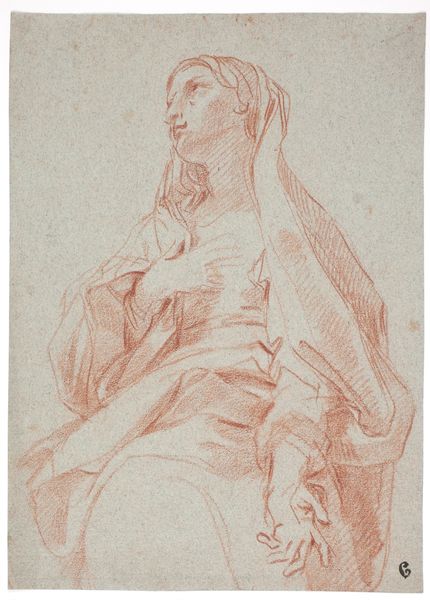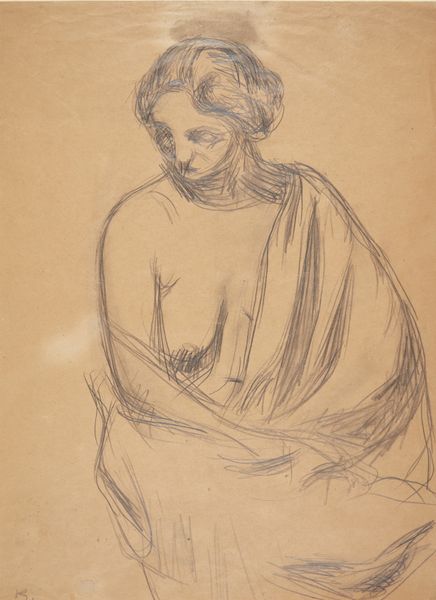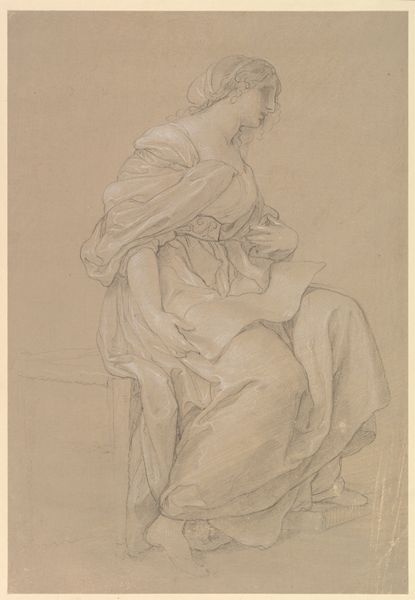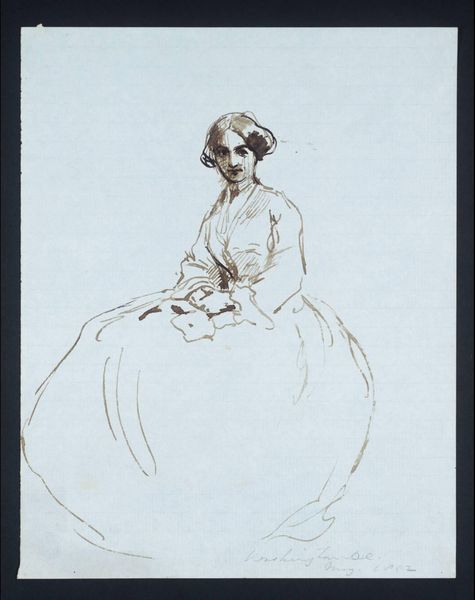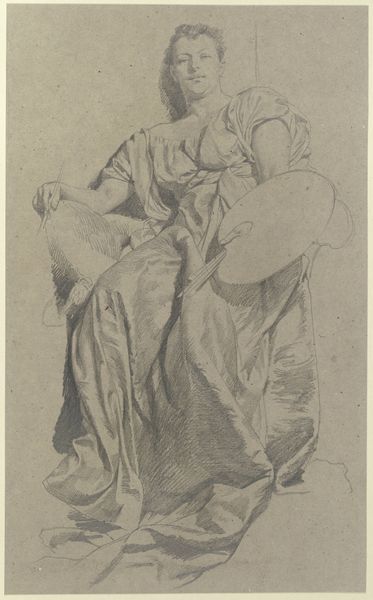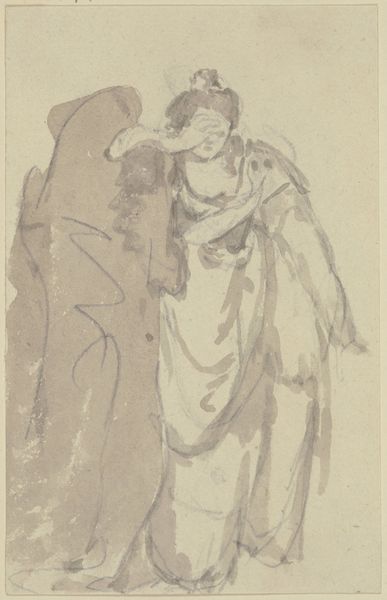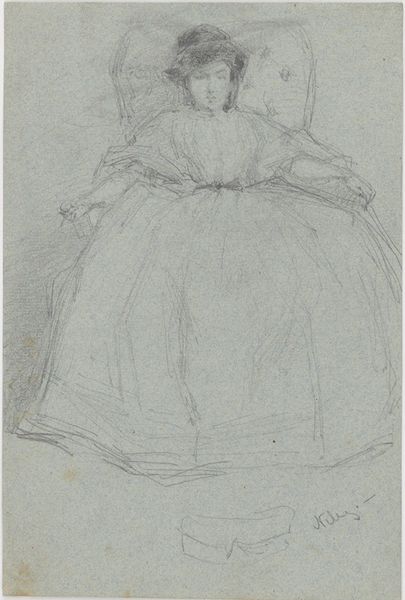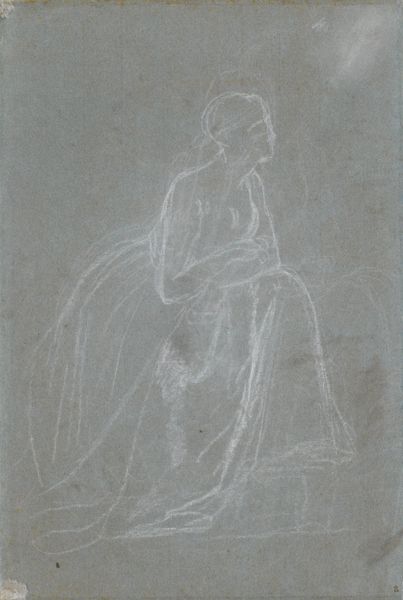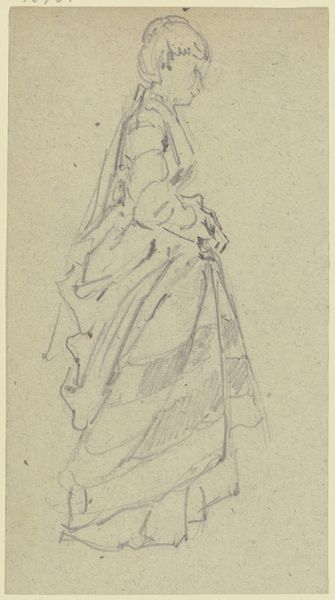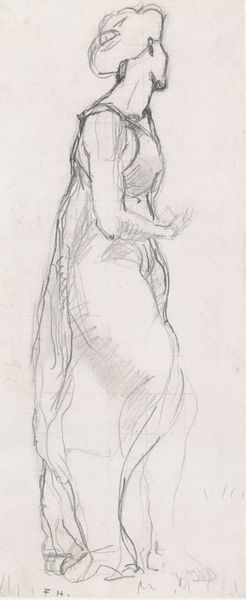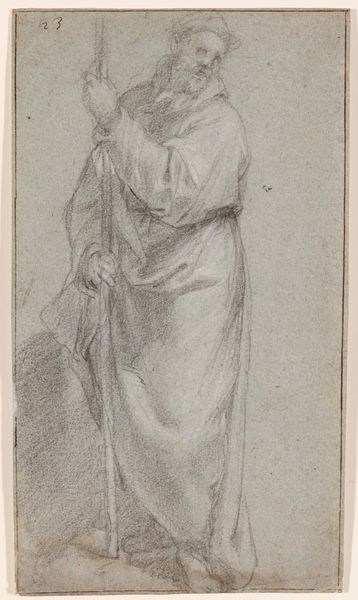
drawing, print, pencil
#
portrait
#
drawing
# print
#
figuration
#
pencil drawing
#
romanticism
#
pencil
Dimensions: sheet: 7 x 4 1/8 in. (17.8 x 10.4 cm)
Copyright: Public Domain
Curator: This is "Seated Girl" by George Jones, a pencil drawing estimated to have been created between 1820 and 1840. It currently resides at the Metropolitan Museum of Art. Editor: There’s something melancholy about her posture, don't you think? The way she's hunched, almost hiding within the lines of the drawing. It feels incredibly intimate, like catching a private moment. Curator: It is remarkable how much Jones achieves with so little. A pencil on paper allows us to truly appreciate the labor of image production in this era. Every stroke contributes to the overall effect. Consider also that blue paper; not just any paper would do, it has to have those fibers, be the correct weight, take to the graphite just so. Editor: Absolutely. And the act of capturing this woman, perhaps a sitter in a specific social class. The way the Romantic period intersects here, the emphasis on emotion, yet restrained by societal expectations of women. I wonder about her life beyond this seated portrait. What were her choices, her limitations? Was she comfortable? The dress she wears signifies something. Curator: Examining the clothing itself speaks to labor and class, right? The production of fabrics, the availability, who had access to such things, the networks it took. One element always contains echoes of others if you just know where to listen. The tools determine what we see, and who and how they do the job matters more than some kind of objective or personal talent. Editor: Precisely. It’s a study in constraint, on multiple levels. Both the woman within her social role and the artist working within the artistic conventions of the time. Yet there's also a palpable sense of individual presence struggling to emerge, don't you feel? Curator: You read that constraint even within Jones’ medium: the pencil itself has limits to its possibilities. Its application, moreover, by this artist at that moment with access to materials only available to some reveals social and material inequalities of image creation and labor. It is something that links a 'master' draughtsman to every amateur sketcher, connecting them across the class lines in shared methods of using certain basic means to represent and produce the likeness of things. Editor: I’ll never look at pencil portraits the same way again. Seeing this woman contextualized within layers of social history and the framework of accessible techniques only emphasizes that historical moment. Thank you! Curator: My pleasure. It shows how artistic conventions can often illuminate deeper understanding if we focus on the production processes within the system of relations available at a given time.
Comments
No comments
Be the first to comment and join the conversation on the ultimate creative platform.
